AMARC is the Aircraft Maintenance and Reclamation Centre and is attached to
the Davis-Monthan Air Force base at Tucson, Arizona.
http://www.dm.af.mil/AMARC/index.html It is a joint military
establishment which stores surplus and redundant aircraft. Approximately 20% of
the aircraft here will fly again. Others are airworthy but will never be
required. Yet more are kept for cannibalisation for parts and the last category
is scrap. When aircraft are brought here they are stripped of fuel, munitions
and classified parts. Then they are wrapped up to prevent the ingress of
moisture and dust. The total value of the aircraft stored here when purchased is
some $28 BILLION. So if you wondered where the tax dollars went....
There are about 4500 aircraft stored here and some of them are
quite modern. These F16 fighters are more modern than most air forces
currently fly.
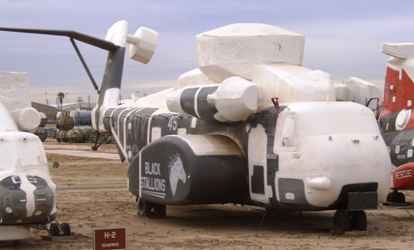 | The tour takes you
down 'Celebrity Row' where one of each type of aircraft stored here is shown. The MH53 Stallion
helicopter is one of the biggest and most modern in service. Thus it is a
little surprising to find one mothballed so early in its career. |
| These three helicopters are all essentially the same machine. The
original Iroquois was deemed to be too large a target so the later models
were made much narrower as helicopter gunships. | 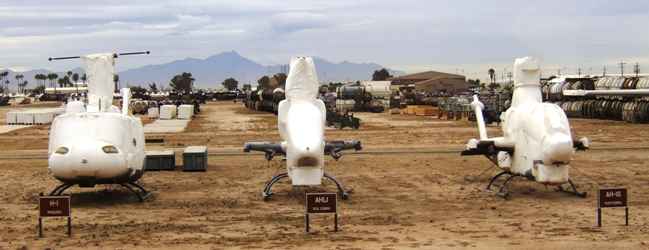 |
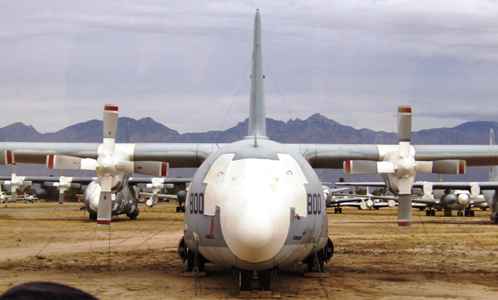 | This is a C130 'Hercules'
Transport and you can see many more behind. I find it odd that such planes
can be mothballed when they could be so useful around the world. |
| There are only two Boeing YC14s in the world and both are in
Tucson. The program for a large military transport was cancelled. At least
they recovered the engines. | 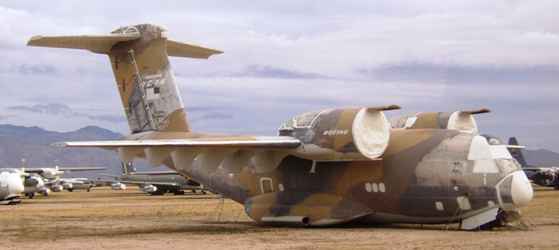 |
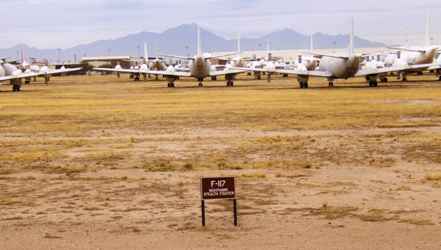 | Someone has a sense
of humour. This is an F117 stealth Fighter. Celebrity Row must have one of
everything! |
| The F111 'Aardvark' is an aircraft still in front line
service with countries such as Australia. It is a fighter with
variable geometry wings. | 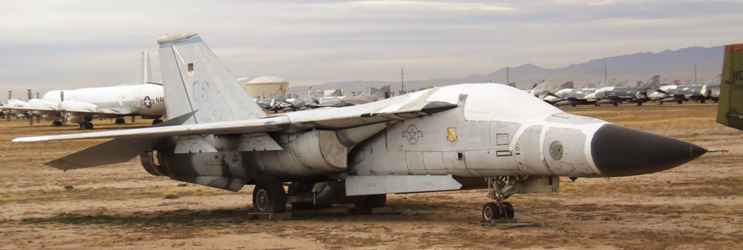 |
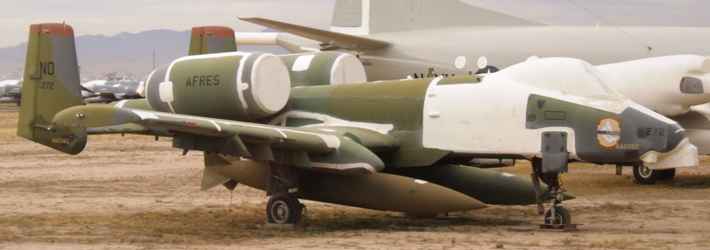 | The A10
'Tank-buster' has been so successful in Iraq, there is a contract in place
to extend its life to 2018. The work is being done here. |
| This is an F14 'Tomcat' as used in 'Top Gun' training schools.
Next to it is one of the few civilian aircraft which is an early member of
the United Airlines fleet en-route to the Smithsonian. | 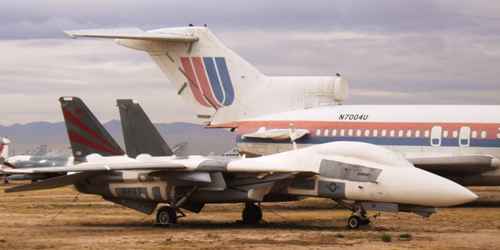 |
 | One of
dozens of B1 bombers (not the stealth version). They are supposed to have
cost 100s of millions of dollars each. |
| The B52 supersonic bomber is capable of carrying 20 cruise
missiles. These are destined to remain in service until 2050 under current
plans. | 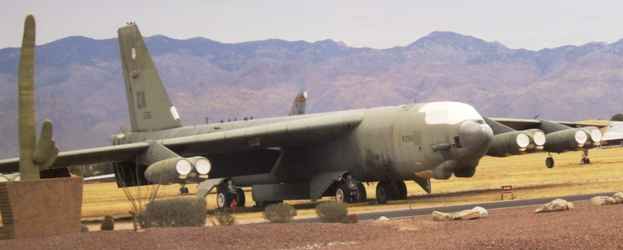 |
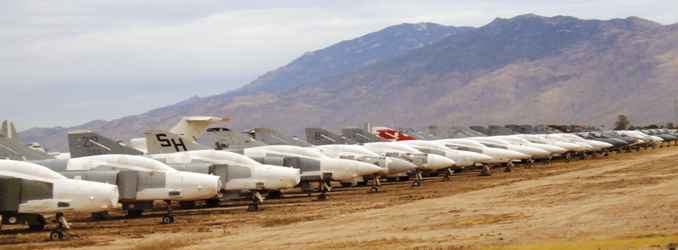 | There are rows and
rows of Phantoms which may or may not fly again (who will want them and
would the US sell them anyway?) |
| Shot from this angle with the mountains behind you get some idea
of the number of rows. There are as many in front of these. |  |
 | The number of
surplus helicopters is just staggering, given what could be done in relief
operations with more helicopters. |
| The little planes in front are stratofreighters (not a lot
smaller than a 747) whereas the ones behind are Galaxies. These weigh
850,000lb fully loaded. |  |
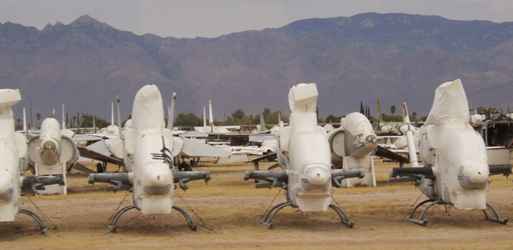 | More helicopters in
storage with Harrier jump-jets behind them. The rotor blades are stored elsewhere. |
| I always though that AWAC early warning aircraft were the most
expensive. But here we have rows of them in store. I wonder how much of the
insides have been recovered as 'classified' material? | 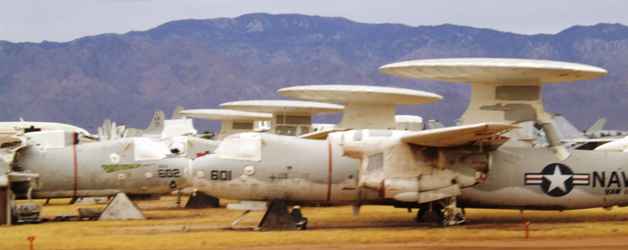 |
 | More B1 bombers.
I'm not sure I understand why these haven't just been scrapped. |
| But I definitely cannot understand why so many helicopters are stored
like this. These are in the 'no longer serviceable' area Presumably the
airframes are life expired. I just keep thinking about the good they could
do in a less demanding role than they were originally certified for. |  |
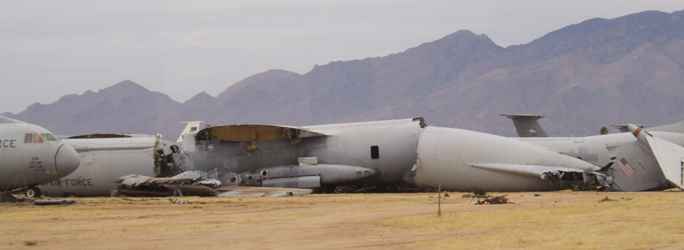 | As part of the
Strategic Arms Limitation Talks (SALT) these bombers were part of the
resources put beyond further use by chopping them in three. 365 aircraft were
to be processed, originally by dropping a 13,000lb guillotine blade on them
from a crane. Now they just use a saw. |
The site also has some Titan missiles which were being used for boosting
satellites into space but are now surplus to even those requirements. This is
the only military establishment in the US which makes a profit. They make $26 for each
dollar spent on the site. With a wage bill of $50 million, they
have some way to go to make a significant impact.
(Photo from AMARC web site) |